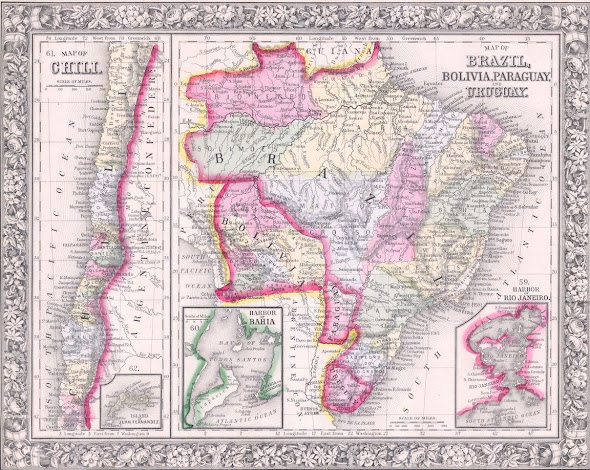The Oil Rush of 1859
The Oil Rush of 1859
The discovery of oil in western Pennsylvania was as spectacular as the discovery of gold in California. The oil rush is not so well known since the Civil War overshadows it. Even so, the frenzy long outlasted the gold rush and yielded more dollars. By late 1864, drilling rights were being sold for $100,000.
By the end of January 1866, rights were sold at from $1million to $2 million.
Not only was oil good for making kerosene, advocates claimed, it was unsurpassed as a medical cure all.
The Oil Excitement—the Jeffersonian, PA December 8, 1859
The oil
fever is raging in portions of Western Pennsylvania. An exchange published in
the Crawford county, and especially in the vicinity of Oil Creek, the fever is
epidemic. Everybody is more or less affected, and the attention of the people
of the people is pretty generally directed to the reservoirs of wealth that
have been discovered, or are supposed to exist in that section. Near
Titusville, a great subterranean reservoir of oil has been tapped, and in
another place ten miles distant, oil is being raised from a well , with a small
hand pump, at the rate of fifteen gallons per hour. The indications of oil at
that place are said to be very fine. It may be seen rising in many places from
the bed of the river, “and by digging the shore three or four feet below the
level of the river, the water in the excavation soon becomes covered with oil.
Many of the wells dug for domestic use contain so much oil as to render them
unfit for use, and from some of the wells oil flows day and night.” Numerous
companies are being formed to bore for the oil and the lands supposed to cover
the reservoirs are in great demand, so it is said. The discovery promises to
revolutionise (sic0 the oil business of this country. Professor Silliman has analized (sic) the
article, and has pronounced it one of the best materials in existence for
illuminating purposes. It is also said by many to be an excellent lubricator.
It has been tried with satisfactory results on buggy axels. When subjected to a high heat, it yields paraffin
in great quantities, and from that material beautiful white candles are
manufactured. It is, besides, “unequaled as a liniment for man or beast.” It affords great relief in the cases of
asthma. Physicians pronounce it valuable as a remedy for scrofulas(sic)
diseases. It cures consumption, and minor diseases “too numerous to mention.”
If all these things are so, great, indeed is the discovery., and tremendous
will be the effect upon the il market and the physical effect on the world. Whales
will no longer be valuable except for their bones. The manufacture of lard oil
will be suspended; the value of lard will consequently decline. Pork packers,
candle makers, etc. will make note of this. Then it will effectually use up the
oil-coal business. It is fortunate for
the pork packers that these startling and important announcements have been
made early in the season. If they failed to be warned and prepared for the
revolution that is approaching, they will have nobody to blame but themselves.
The Petroleum or Rock Oil of Pennsylvania, if we can believe reports, will take
possession of the markets. Ten cents per gallon will cover the expense of
pumping, barreling, and transportation to New York, where, for the present, it
is being refined, and the article, ready for consumption, will be sold at a
very low figure, compared with other oils. It will illuminate, lubricate, make
candles, and cure most diseases from which humanity suffers. There will,
therefore, be but little use hereafter for the whale, the hog, or the grave
digger. Let the world rejoice, and let pork packers and doctors take warning.
DISCOVERY OF A SUBTERRANEAN FOUNTAIN OF OIL
Correspondence of the NY Tribune
Titusville, PA September 8, 1859
Perhaps you will recall that in 1854 there was organized in the City of New York a Company, under the name of the Pennsylvania Rock Oil Company, which, for some good reason passed into the hands of some New Haven capitalists, and was by them removed to New Haven. In 1858, the Directors leased the grounds and springs to Mr. E. L. Drake, well known on the New Haven Railroad. He came out here to Titusville and in May last commenced to drill for salt, or to find the source of the oil which is so common along the bank of Oil Creek. Last week, at the depth of 71 feet, he struck a fissure in the rock through which he was boring, when, to the surprise and joy of everyone, he found he had tapped a vein of water and oil, yielding 400 gallons of pure oil a day.
The pump now in use throws only five gallons of water and oil into a large vat. When the oil rises to the top and the water runs out the bottom. In a few days they will have a pump three times the capacity of the one now in use and then from ten to twelve hundred gallons of oil will be the daily yield.
The Springs along the stream I understand, have been mostly taken up or secured by Brewer & Watson, the parties who formerly owned the site now in operation.
The excitement attendant on the discovery of this vast source of oil was fully equal to what I saw in California, when a large lump of gold was accidently turned out.
(We are well acquainted in the vicinity in which this discovery has been made, having been born and raised there. The oil taken off the springs, which run to the surface of the ground, is called “Seneca Oil,” and is possessed of unsurpassed medicinal and chemical properties. It is regarded as one of the best medicines, either for internal or external applications now known; and, in out boyhood we swallowed, with good effect, many a teaspoon of it as a cathartic medicine and pulmonary tonic.)
After English, the most widely used language in newspapers was German.
Here is an article from the German language newspaper Der Lecha County (PA) Patriot December 21, 1859.
A New Source of Employment
There’s
great excitement in the Pittsburgh area following the discovery of an
underground reservoir of oil. Entire communities are busy sinking wells for
oil. Pumped and unrefined oil is sold for 60 cents a gallon. It does not cost
more than 1 cent a gallon to pump it out plus 9 cents for barrels and transport
to Pittsburgh, New York and Philadelphia. Refined oil is sold at a high price.
This oil is petroleum, a bituminous substance below ground water. It does not
appear the excitement is entirely unfounded though other published accounts make
it appear so. A striking circumstance appears in regard to this oil
drilling. In many places in the “oil
derrick valley” the ground is dotted with pits, hundreds and thousands
apparently made to collect oil. The pits must have been dug long ago because
trees at least 250 years old grow over some of them. The question now is who
dug those pits and for what purpose was oil collected? It appears Native
Americans dug those pits for some unknown purpose.
(My own translation)
A day or two ago a German named Rosenthall struck a vein at Smith’s Ferry, on the Ohio above this city. Nothing but pure water came up for an hour. After that thirty-one barrels of oil were produced in nine hours. Since that time the well has produced at the rate of one barrel of pure oil every eighteen minutes. The well is 73 feet deep. A Mr. Thompson struck a vein in the same place at 70 feet, and in the first sixty-two minutes obtained three barrels of oil. It has continued to flow regularly ever since.
Some 35 years ago a well was sunk on what is now known as Brownlog farm, above this city, on the Virginia side, which at the time failed to give a supply of water but did give indications of oil. A company has been formed in Steubenville with the design of sinking a shaft in the same well, with the expectation of striking a good vein of oil which attracts much speculation just now. The company have reached a depth of 197 feet, and within a day or two expect to reach the depth to which the well was formerly struck.
A great many reports have come up from the Little Kanawha, which sound so much like Munchausism that we have been afraid to risk our veracity in the publishing of them; they have to be believed some time or other, and our readers may as well commence realizing the truth now. The Camden well on the Little Kanawha, spouts oil periodically, four or five times every day. In one of these spouts a few days since, a hundred barrels of pure oil were thrown out in thirty minutes. Shortly after this the well spouted for an hour and a half, filling the vats in a few minutes. The workmen finding it impossible to barrel the oil as fast as it came out, got a couple of flat boats, about fifty feet long, which were placed in the river directly opposite the well and a trough placed at the mouth of the well so as to run the oil onto the boats, in which way the two boats were filed with oil. The exact amount thus secured was not accurately ascertained, but must have been three or four hundred barrels. Between the flows, the well is pumped with the aid of a sweep used in boring, as fast as the men can fill the barrels when any can be had.
The Lowellen well has produced and will produce fourteen hundred and forty barrels every twenty-four hours, which will sell in New York for $20, 160. This quantity flows, says the Parkersburg News, whose editor saw the well and knows all about it, from a very small aperture If the whole aperture were left open, and vats large enough and barrels sufficient cold be had, it would certainly yield five or six times as much oil as now flows from one eighth of an inch on the outside of the hole, making the possible yield of the well as high as one hundred thousand dollars’ worth of pure oil in twenty four hours. This is not only said to be true, but the best possible estimate made here is much below what the figures will show. Thousands of people are boring all along the river and in the vicinity of Burning Springs. Three or four companies from this city have leased little patches of land and gone vigorously to work.






Comments
Post a Comment